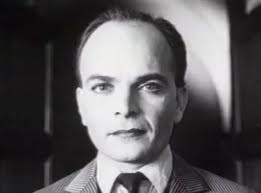Russian Cinema: 1918-1920 the Editing Revolution

Russian Cinema 1918-1920
In one year, Russian went through two revolutions, one to overthrow the aristocratic rule and the other to overthrow the provisional government. It was only after the second revolution that the Bolshevic party and its leader Vladimir Lenin created the Union of Soviet Socialist Republic.
So, how did the newly formed U.S.S.R. change the film industry? Not much at all. Top directors Bauer and Protazanov made films like The Revolutionary (1918) and Father Sergius (1918) respectively. Bauer didn't, however, get to see the premier since he died in the spring of 1917. There would be a lot of change to come and a new revolution would happen within the industry.
- Russian Cinema: The Importance of the Early Silent Era
This is an overview of Russia's silent era from 1896-1919. It highlights some of the classic films of that era and provides some information about the origins of great Russian Cinema. Don't think these movies are all outdated because they are in blac
Russian Propaganda
The Bolshevik’s succeeded toppling over the government, but they lacked the power to nationalize the film industry. Instead, they created a department, the People’s Commissariat of Education or Narkompros to oversee the industry. The head or commissar was Anatoli Lunacharsky, a man whose respect for film would play an important part in the evolution of the industry.
Lunacharsky wrote a script, which was directed by a collective and meant as a propaganda piece promoting the new Marxist regime. The film, Cohabitation (1918) emphasized the need to redistribute money and belongings from the very rich to the poor. This would be the first of many propaganda films to emerge from the new Communist government.
Make Films? With What?
The revolution didn’t come without consequence. Many in the film industry saw the writing on the wall and took their companies with them. That meant the USSR lacked cameras, film, film stock, production equipment and most everything you can think of to make a movie.
To invest in the industry, the new regime entrusted 1 million dollars to Jacques Cibrario, a film distributor who had often worked in Russia. He went to the US and purchased useless equipment then ran off with the rest of the money. Needless to say, the government wasn't pleased and the film industry was on notice after that. As a result, only 6 films were made that year and the once thriving industry is almost at a standstill.
It was around this time that Narkompros released its first newsreel. They hired a young director, Dziga Vertov to oversee it and little did they know he would become key to the future of Russian cinema.
- German Cinema: What You Need to Know About the Silent Era
This is an overview of Germany's silent era from 1912-1929. It highlights some of the classic films of that era and provides some information about the two more popular film movements on the time. Don't think these movies are all outdated because the
A Film Review by Stevennix
- Birth of a Nation Film: Why things were so different back then? Featuring great cinematography of a
The Civil War divides friends and destroys families, but that's nothing compared to the anarchy in the black-ruled South after the war.
Film School Marxist Style
At the end of 1919, Lenin finally nationalized the film industry, what little left there was of it. For the next couple of years, the USSR depended on old films and films that had been stored away as their only output. To insure the film industry didn’t fold under these harsh conditions, Narkompros opened the State Film School. It was only a year later, in 1920 that the school would hire a young director, Lev Kuleshov, who would alter the way film was theorized and studied. But, I’ll say more on that in a bit.
So, what does a film school with no film, no equipment do? They acted out the scene and used picture-like frames to mark the mise-en-scene or even close ups. That’s right, they put on skits and plays to study film and pretended to cut scenes and frame shots. They couldn’t do much else, because, unlike the Germans who painted sets and used limited lighting to compensate for a lack of funds, the newly formed USSR had almost nothing to use and their government had even less to give them. They were persistent.
The group headed by Kuleshov was really inspired by the work of D.W. Griffith and his 1915 classic, The Birth of a Nation. They had little interest in the narrative of the movie, but were fascinated by the way Griffith used editing to instill certain emotions from the audience. This fascination would lead to one of the most used principles in film editing: the Kuleshov effect.
The Kuleshov Effect
Simply put, the Kuleshov effect is editing scenes together without any regard to continuity, time or special context. What Kuleshov did was take old footage of actor Ivan Mozhukhin where his expression was neutral. He then mixed in other shots of random subject matter such as: a bowl of soup, a dead body and other items with no relation to the scene Ivan’s original shot was taken from. What happened next would alter the way film was viewed. The audiences watched and thought Ivan’s performance was stellar, when, in fact, his expression never changed and was the same for every performance.
Kuleshov had many experiments and though the one with Ivan no longer exists, there were others that showed several other theories about the way viewers experience film. All revolved around the importance of editing as opposed to the individual shot and placed montage as central to the audience’s filmmaking experience. Though this seems like a no-brainer, it hadn't been studied and Kuleshov was the first to theorize and explain why a film like Birth of a Nation was so powerful.
Though the video below isn't the original (despite what the title says), it shows the Kuleshov effect while using actor Ivan Mozhukhin. I imagine the original was very similar to this one and one can easily see how an audience could see an array of emotion in one non-committal shot.
The Kuleshov effect would eventually mold the new filmmakers that would emerge from these studies. Out was the slow moving narrative with emphasis on inner turmoil. In was the fast pace editing of seemingly unconnected shots, action shots and montage sequences. This group wanted to match the United States' success and then top it. The had the theories, the film education and a slew of young directors waiting for their chance at showing their work. All they needed was film, equipment and money. Soon, they'd get it.








